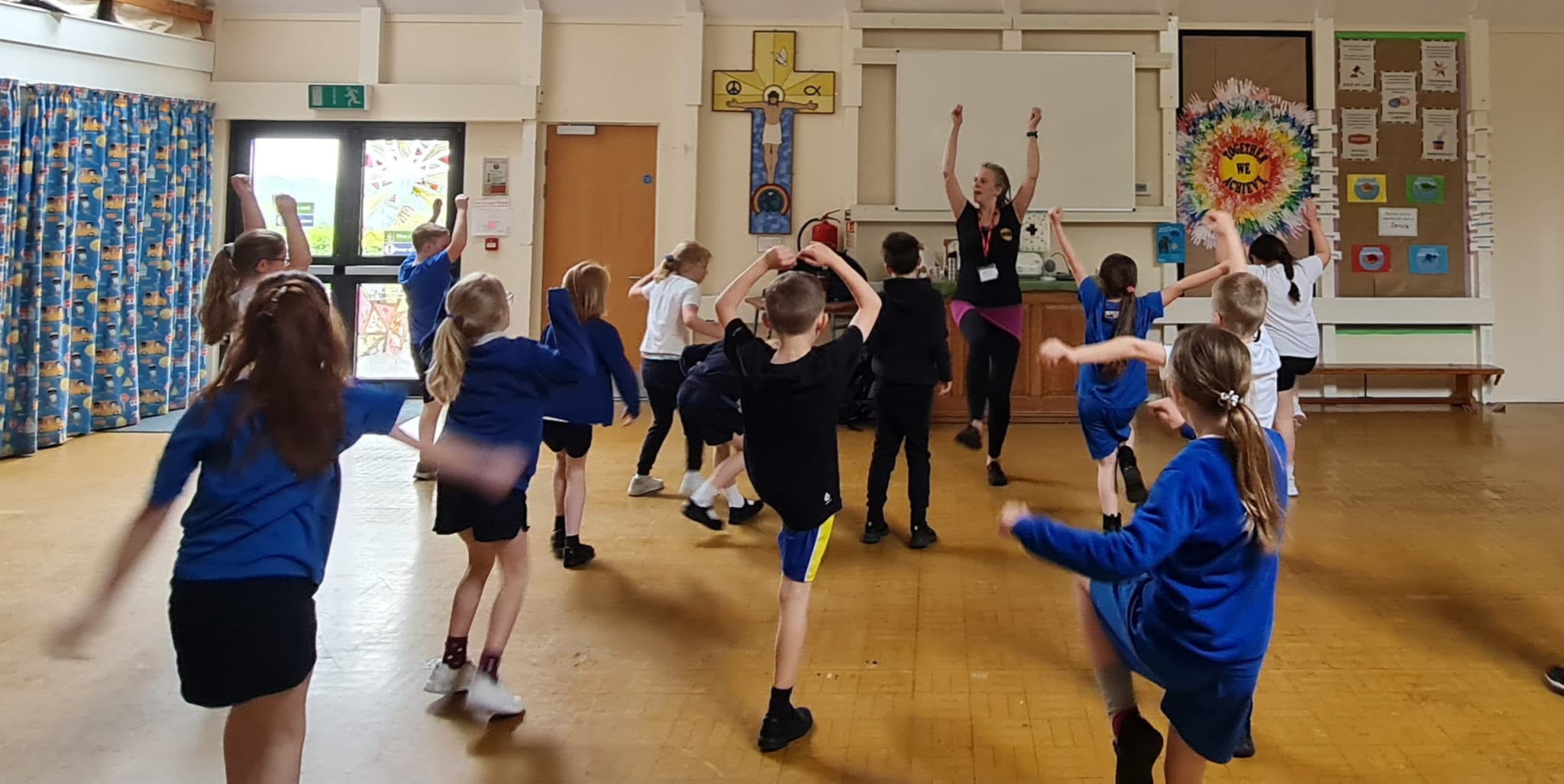NEWS
Buzzing Britain: Bringing Morris Dancing to a New Generation
In a unique project introducing Morris dancing to a new generation, "Buzzing Britain" set out to engage young people in traditional dance.
Share

Commissioned by the Morris Federation and funded by Arts Council England and Lancashire Encounter Festival, "Buzzing Britain" brought expert dance instruction, live performances, and creativity into primary schools in three culturally diverse regions of England. The project’s impact reached beyond the classroom, with lasting memories, personal growth, and a newfound cultural appreciation in both students and teachers alike.
“Morris dancing is thriving in much of the country,” said Pauline Woods-Wilson, President of the Morris Federation. “But there are many communities that don’t have a local Morris side, meaning young people miss out on the opportunity to see and take part in their own dance traditions. Through ‘Buzzing Britain,’ we’re bridging that gap and getting children excited about Morris dancing in ways that feel authentic and inclusive.”
Launched in early 2024, "Buzzing Britain" was designed to modernise the image of Morris dancing by blending traditional elements with contemporary dance styles that would appeal to younger audiences. The project’s educational materials included a series of short, vibrant videos that showcased various English dance styles—from Cotswold and Border Morris to Rapper sword dancing. Filmed at the Warwick and Bromyard Folk Festivals, these videos became the backbone of a downloadable school pack accessible to educators nationwide.
To provide an immersive experience, the Morris Federation collaborated with Damien Barber and Breaking Tradition, and Folk 3D, two organisations with rich histories in folk dance education, to bring specialised workshops directly into classrooms. Breaking Tradition managed workshops in Preston and Kirklees, while Folk 3D’s Sarah Matthews and Sara Marshall-Rose led sessions in North East Derbyshire. These workshops introduced young students to traditional moves while allowing them to incorporate personal style and modern dance elements.
"Buzzing Britain" was well-received by both students and educators, with feedback highlighting the accessibility, engagement, and flexibility of the workshops. The program’s design was built to fit into school schedules smoothly, allowing schools to engage in bi-weekly sessions that were easy to incorporate into regular curriculum time.
According to teachers, the classes struck a good balance between discipline and creativity, as students were guided to learn traditional steps while encouraged to improvise. “The children thoroughly enjoyed learning about the more traditional aspects of Morris dancing. Combining the street dance with Morris dancing engaged more students and allowed for a blend of the old and new,” noted one teacher involved in the project. Another remarked, “Our students were enthusiastic, and the instructors were fantastic at connecting with them and tailoring each session to keep everyone engaged.”
Tutors worked to personalise the experience further by allowing students to choose accessories like sticks or hankies and by adapting routines to suit each class’s needs and interests. By making room for personal touches and freestyle sessions, the instructors cultivated a sense of ownership among students, making the sessions both educational and deeply enjoyable. As a participant noted, “Not only did they follow the traditional routines, but they also added their own unique freestyle element, making the sessions a blend of the old and new.”
"Buzzing Britain" achieved more than just teaching dance; it built students' skills in teamwork, coordination, and creative expression. Instructors used simple musical tasks, rhythm counting, and basic choreographic skills that helped students grasp the fundamentals of dance and its connection to music. Teachers observed significant improvements in bodily awareness and rhythmic timing, with one noting, “The children became much better at counting the beats and dancing in time with the music.”
Beyond the physical skills, students gained confidence in their creative abilities. “Learning from expert instructors gave them an opportunity to express themselves and gain confidence, which they carried into other parts of school life,” noted one teacher. The structured yet flexible nature of the dance workshops encouraged students to think creatively, leading to unique dance adaptations and personal breakthroughs.
One of the highlights of "Buzzing Britain" was the series of regional showcase events, where students from participating schools came together to perform for each other and their communities. The events provided students with the chance to share their progress, cheer on their peers, and enjoy the excitement of performing. “The event at Matlock County Hall proved to be a highlight of the term for our class. Not only did they gain an appreciation for their cultural heritage, but they also had an immense amount of fun. The outing reinforced teamwork, creativity, and self-expression, and the children returned to school with new-found confidence,” shared a participating teacher.
As "Buzzing Britain" concludes, its success in engaging a new generation with Morris dancing is clear. For many students, the project offered their first introduction to a unique part of English heritage, sparking curiosity about cultural traditions they may not have otherwise encountered. "Buzzing Britain" demonstrated how traditional dance can be updated to resonate with young people, blending historical and modern elements in a way that resonates with today’s students.
Instructors, students, and school staff alike expressed the hope that Morris dancing could become a more common part of school curricula, enhancing students’ appreciation for British culture and providing a creative outlet. The project’s collaborative and adaptive approach exemplifies how traditional art forms can evolve and remain relevant, fostering cultural pride and engagement in an increasingly diverse Britain.
Reflecting on the achievements of "Buzzing Britain," Pauline Woods-Wilson emphasised the project’s role in making Morris dancing accessible: “Through this project, we’re helping young people across the country connect with their cultural heritage in a way that feels modern and enjoyable. It’s a celebration of tradition, creativity, and community—a perfect blend for bringing Morris dancing into the future.”
As future projects look to build on the foundation laid by "Buzzing Britain," the lasting impressions left on these young participants underscore the importance of traditional arts in shaping vibrant, inclusive communities.